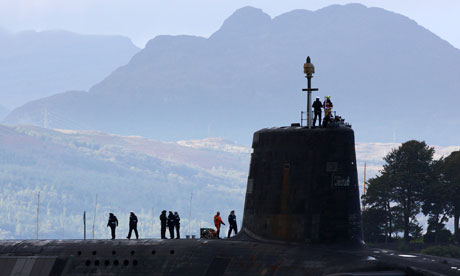
Defence
Large amounts of money to pay for fees for schools abroad and legal advice feature among the £1.6bn spent by the Ministry of Defence in less than five months.
The biggest recipients, unsurprisingly perhaps, were companies behind large weapons, engineering, and construction, including BAE, Babcock, and Balfour Beatty. But firms building and managing accommodation for the armed forces, including Aspire Defence Limited and Annington Property Ltd, were also recipients, with the two companies paid more than £170m over the period.
But there were red faces in the MoD when it withdrew details of more than £14m in expenditure following questions from the Guardian. Some details are being withheld for operational security reasons and some because of confidential legal settlements, officials said.
The figures reveal the MoD spent nearly £880,000 on the education of the children of military families abroad. More than half was spent at the British School of Brussels – the city is the home of Nato. The MoD also provided money to the British School of Paris, to the British School in New Delhi, for the children of defence officials working in Nepal; and to Afnorth International School in Brunssum, in the Netherlands, where the children of Nato personnel are educated. The Bavarian International School, north of Munich, was paid £32,000. The MoD said last night that all these payments were for school fees.
More than £1m was spent on the Treasury Solicitor, the government's lawyers. In response to a Freedom of Information Act request this week, the MoD disclosed its annual bill for legal advice, including from private firms and consultants, was £40m. Litigation involving claims against British troops who held detainees in Iraq accounted for a significant proportion. The MoD's accounts provide details of expenditure on items that might escape public attention and are unlikely to be found in published National Audit Office reports.
They reveal, for example, that £28,000 was paid to the Burnett Arms Hotel in Scotland – the charge for 53 people spending 12 nights during an exercise at RAF Kinloss. The Sportsman's Arms Hotel received £8,100 during a military exercise in Kenya. Nearly £54,000 was paid to Alpha Fine Foods for supplying rations to the army on exercises there.
In other items, the MoD spent:
• £2.2m on rents and rates to the Ascension Island government whose airport the RAF uses for planes flying to the Falkands.
• £81,800 to a Tommy Doherty, who supplied the armed forces with 20 horses.
• £31,300 to Bladerunner Ltd, based in Catterick, North Yorkshire. It offers services to any organisation "seeking to improve its health and wellness programmes".
• £37,000 to Knotty Ash Woodworking, a Liverpool joinery which supplied the MoD with "security control room furniture". Richard Norton-Taylor
Health workers
The government is paying about £4m a month to NHS staff who have been injured in the course of their work, Department of Health spending figures reveal.
The NHS injury benefits scheme received £16m in the three months from May to July this year, a payment within the top 20 highest made by the department.
The scheme pays out to nurses, doctors, porters and other NHS employees who have been attacked by a patient or had an accident while at work. It "provides an annual allowance for staff who have suffered a permanent loss of earning ability as the result of an illness or injury wholly or mainly attributable to their NHS employment", says its website.
The money from central government pays for the annual allowances of about 8,000 people who were injured prior to 1997. From April 1997 the government moved responsibility for new claims to NHS employers – hospital trusts or primary care trusts.
In all, about 30,000 applications for support have been processed by the scheme since it began in 1972. Some applicants will have been turned down, while other claimants will have recovered and gone back to work, earning a sum comparable to their salary before the accident.
There appear to be no centrally held figures on the cost of NHS work-related injury allowances after 1997, but in those 13 years it is likely that the total bill will have risen to at least half as much again, which would be £6m a month.
There have long been concerns about the hazards to which NHS staff are exposed and the stress they experience, which is made worse by staffing shortages. The National Audit Office in 2003 found that the main cause of accidents was moving and handling patients, needlestick injuries, exposure to hazardous substances, or slips, trips, and falls.
A report into the health and wellbeing of NHS staff last year found that sickness absence amounted to 10.7 days on average each year, higher than the average in the public sector and 50% higher than the 6.4 days average per employee in the private sector. Stress, musculoskeletal problems and mental health difficulties were the most common work-related problems reported by staff. Sarah Boseley

